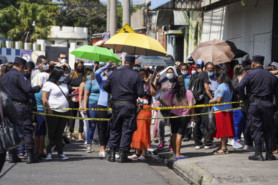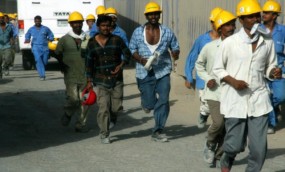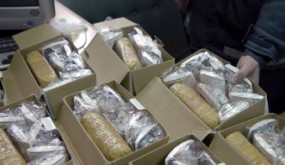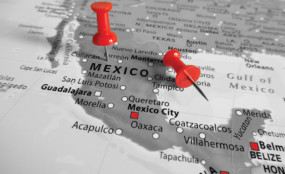Posted on 22 Mar 2016
LAUNCH: Organized Crime and Illegally Mined Gold in the Americas
Wednesday 6th April, 2-4pm, WMO Building, 2nd Fl, Geneva
In the first decade of the 21st century, two trends intersected: soaring gold prices greatly increased the profitability of gold mining, whilst the US led “War on Drugs”, notably in Colombia and Mexico (‘Plan Colombia’ and the ‘Mérida Initiative’), sharply reduced the profitability of drug trafficking from Latin America to the USA. As a result, there were considerable incentives for the criminal groups that control the drug trade to move into gold mining, and the fragmented nature of artisanal gold mining in Latin America greatly facilitated their entry. These groups were quick to realise that taking control of large swaths of land remote from government attention and dominating the enterprises that mined that land would enable them to generate larger profit margins with much lower risk.
The change of strategy by the drug trafficking groups proved so successful that in Peru and Colombia – the largest cocaine producers in the world – the value of illegal gold exports now exceeds the value of cocaine exports. Even though global gold prices have gradually decreased in recent years, organized criminal groups have continued to drive the expansion of illegal gold mining. The region is now unique in the high percentage of gold that is mined illegally; about 28% of gold mined in Peru, 30% of gold mined in Bolivia, 77% of gold mined in Ecuador, 80% of gold mined in Colombia and 80-90% of Venezuelan gold is produced illegally. Illegal gold mining employs hundreds of thousands of workers across Latin America, many of whom are extremely vulnerable to labour exploitation and human trafficking.
The Global Initiative Against Transnational Organized Crime carried out desk and field research in Latin America between February and December 2015 in order to investigate links between organized crime and illegal gold mining and to explore the manner in which the nexus between organized crime and illegal gold mining funds criminal and terrorist groups, facilitates money laundering and corruption, forcibly displaces local populations, speeds environmental destruction and creates situations of labour exploitation, labour trafficking, and sex trafficking .
Latin American countries with high rates of illegal gold mining and related social and environmental risks constitute some of the biggest suppliers of gold to key refineries in countries such as Switzerland and the United States, which refine gold for the biggest jewellery and electronics companies in the world, in addition to central and private banks. In order to combat illegal gold mining and the social and environment consequences that accompany it, governments, the private sector, and multi-stakeholder initiatives must take immediate coordinated actions.
The report will be launched via a panel discussion including:
- Livia Wagner, Private Sector Advisor and report author, Global Initaitive
- Nils Krauer, Independent ASM Expert
- Frederic Chenais, Swiss Federal Department of Foreign Affairs
- Denis Ruysschaert, SWISSAID Geneva
- Nawal Ait-Hocine, Former Member of the Executive Committee of the Responsible Jewellery Council
To register to attend, please email: livia.wagner@globalinitiative.net



